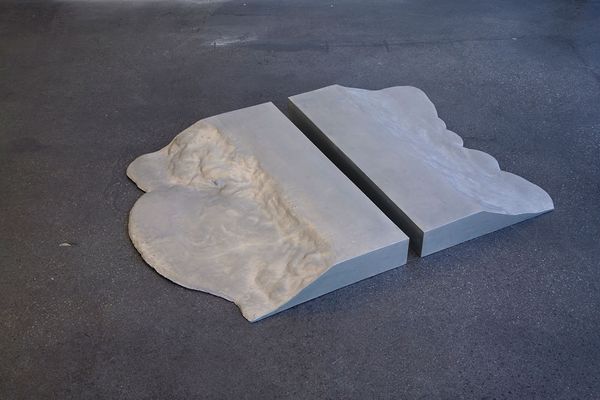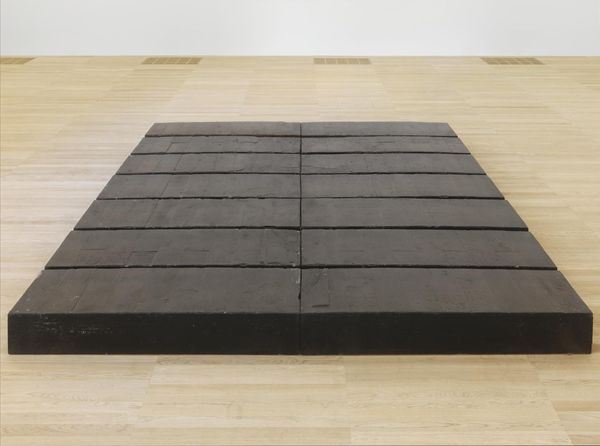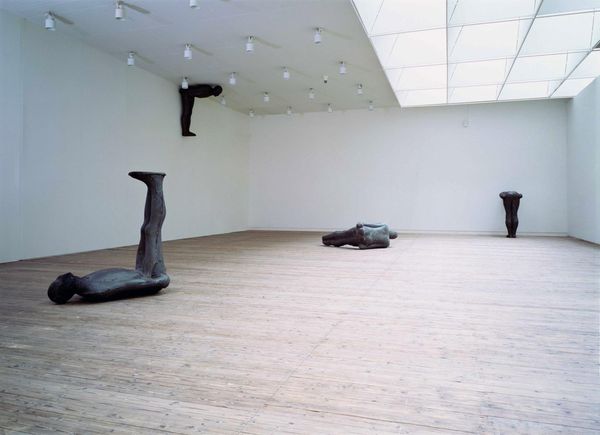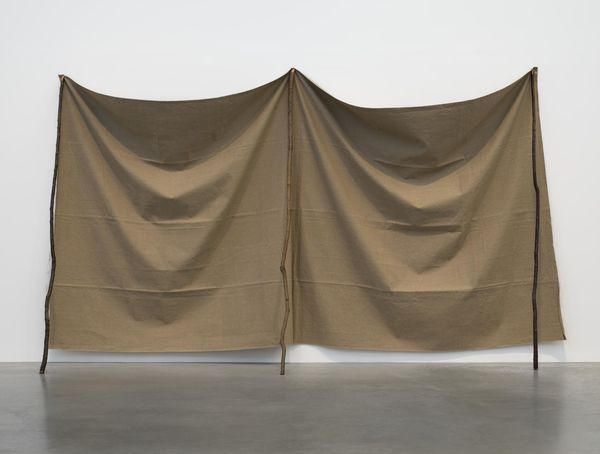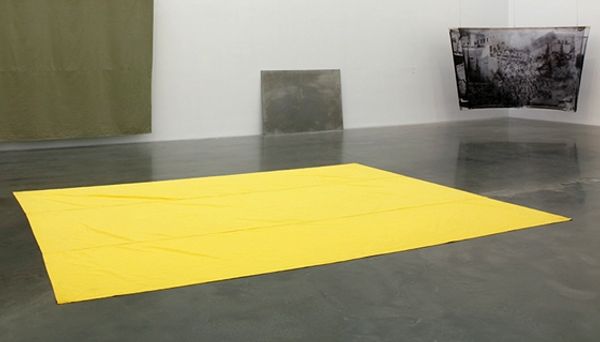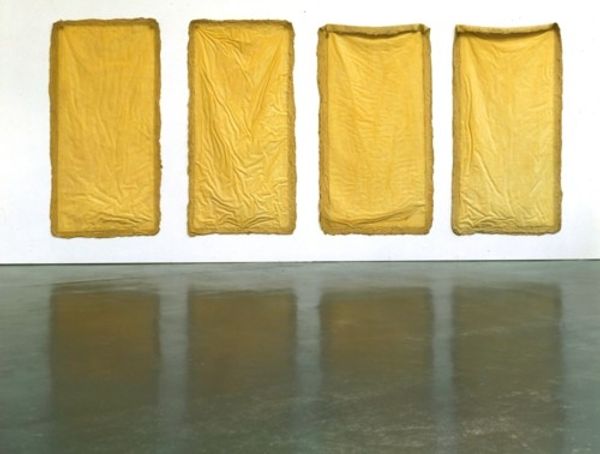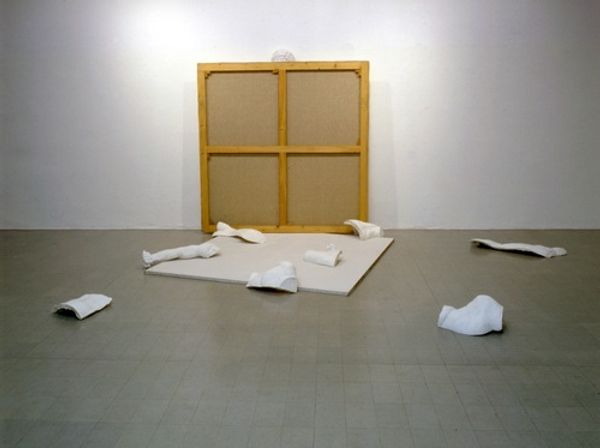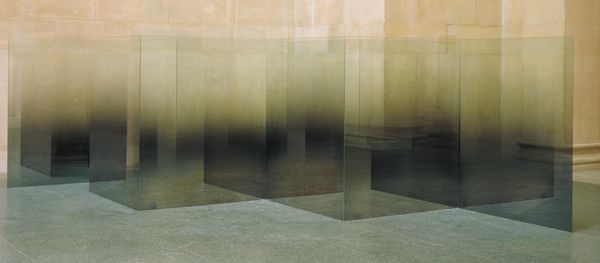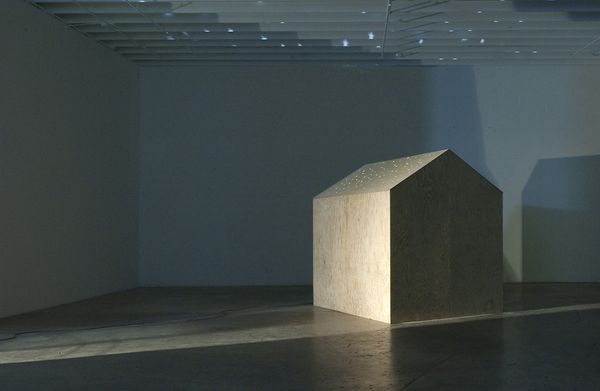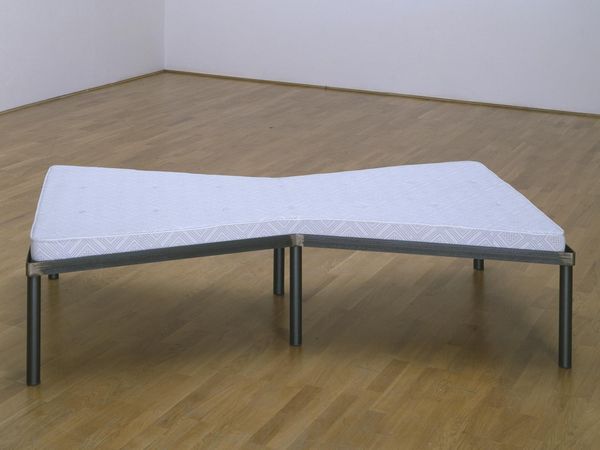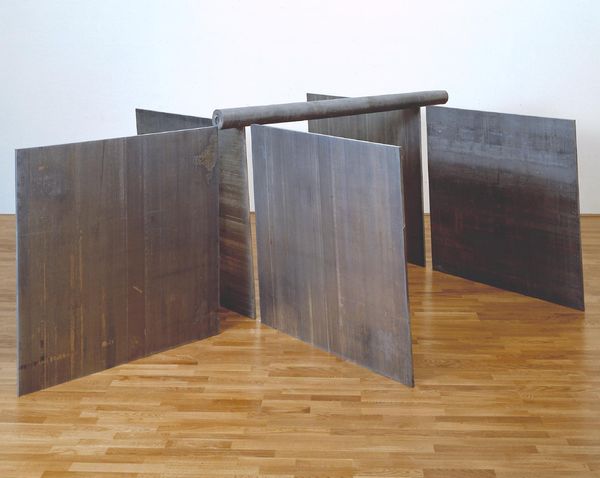
Dimensions: unconfirmed: 280 x 3530 x 2700 mm unconfirmed: 250 x 2950 x 3200 mm
Copyright: © Anish Kapoor | CC-BY-NC-ND 4.0 DEED, Photo: Tate
Editor: Right, so we're looking at "A Wing at the Heart of Things" by Anish Kapoor. These large, indigo forms just sitting on the floor… they feel almost like fallen celestial bodies. What do they evoke for you? Curator: For me, it's a journey inward. Kapoor's use of pigment, especially this deep ultramarine, creates a sense of limitless space, like diving into the subconscious. Don't you feel a pull, almost a gravitational force? Editor: I see what you mean. It’s like they’re absorbing all the light, drawing you in. The title, too, suggests something intimate despite the scale. I initially saw these as external objects, but you’re right, it does feel like a personal landscape. Curator: Exactly! Art is a mirror, reflecting our own internal landscapes. And Kapoor excels at creating that reflective space. It’s like he's inviting us to explore the geography of our souls. Editor: That's beautiful. I'll definitely look at Kapoor's work differently now.
Comments
tate 6 months ago
⋮
http://www.tate.org.uk/art/artworks/kapoor-a-wing-at-the-heart-of-things-t05856
Join the conversation
Join millions of artists and users on Artera today and experience the ultimate creative platform.
tate 6 months ago
⋮
At the time this work was made Kapoor's sculptures were of three main kinds: concave hemispheres, covered in intense blue pigment, stone carvings hollowed out to reveal dark apertures giving on to deep interior spaces and, as here, split or carved stone, again covered with pigment. The colour blue traditionally has spiritual significance and Kapoor uses it to suggest the sky, or infinity, and the overcoming of matter to reach a more spiritual state. Kapoor has described a similar work as representing a transformation from earth to sky. He confronts ideas common to most of the major religions but avoids specifically religious symbolism. Gallery label, August 2004
